| |||||||||||||||||
| |||||||||||||||||
| |||||||||||||||||
| Elections in New Mexico |
|---|
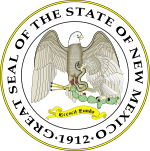 |
The 1932 New Mexico gubernatorial election took place on November 8, 1932, in order to elect the Governor of New Mexico. Incumbent Democrat Arthur Seligman won reelection to a second term.
| |||||||||||||||||
| |||||||||||||||||
| |||||||||||||||||
| Elections in New Mexico |
|---|
 |
The 1932 New Mexico gubernatorial election took place on November 8, 1932, in order to elect the Governor of New Mexico. Incumbent Democrat Arthur Seligman won reelection to a second term.
| Party | Candidate | Votes | % | |
|---|---|---|---|---|
| Democratic | Arthur Seligman (incumbent) | 83,612 | 54.82 | |
| Republican | Richard C. Dillon | 67,406 | 44.19 | |
| Other | 1,518 | 1.00 | ||
| Total votes | 152,536 | 100.00 | ||
| Democratic hold | ||||

The governor of New Mexico is the head of government of New Mexico. The governor is the head of the executive branch of New Mexico's state government and the commander-in-chief of the New Mexico National Guard. As noted in the governor's seal, this gubernatorial office is a scion of the Spanish and Mexican governors of Nuevo México (1598) and the governors of the New Mexico Territory (1851). The officeholder is afforded the courtesy title of The Honorable for life. The current governor is Michelle Lujan Grisham, a Democrat, who was sworn in as the 32nd governor of New Mexico on January 1, 2019.

William Blaine Richardson III was an American politician, author, and diplomat who served as the 30th governor of New Mexico from 2003 to 2011. He was also the U.S. ambassador to the United Nations and energy secretary in the Clinton administration, a U.S. congressman, chair of the 2004 Democratic National Convention, and chair of the Democratic Governors Association.

Abelardo Rodríguez Luján, commonly known as Abelardo L. Rodríguez was the Substitute President of Mexico from 1932 to 1934. He completed the term of President Pascual Ortiz Rubio after his resignation, during the period known as the Maximato, when Former President Plutarco Elías Calles held considerable de facto political power, without being president himself. Rodríguez was, however, more successful than Ortiz Rubio had been in asserting presidential power against Calles's influence.
The governor-general of the Philippines was the title of the government executive during the colonial period of the Philippines, governed by Mexico City and Madrid (1565–1898) and the United States (1898–1946), and briefly by Great Britain (1762–1764) and Japan (1942–1945). They were also the representative of the executive of the ruling power.

Andrew W. Hockenhull was an American attorney and the tenth governor of New Mexico.
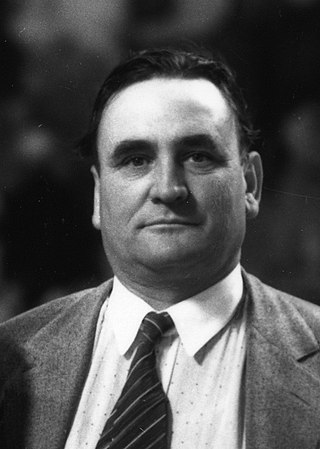
Clyde Kendle Tingley was an American lawyer and Democratic politician who served as the 11th governor of the State of New Mexico. He was a children's healthcare advocate.
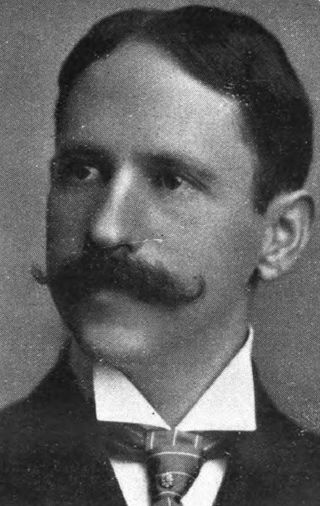
Arthur Seligman was an American businessman and politician. He served in several offices in New Mexico, including mayor of Santa Fe and governor.

Edwin Leard Mechem was an American attorney, politician, and jurist from New Mexico. He served as the 15th, 17th, and 19th governor of New Mexico, the first person born in the 20th century to become the state's governor, as well as the first person born in New Mexico after statehood to ascend to the office. During his final term as governor, Mechem appointed himself as a United States Senator, pursuant to the Seventeenth Amendment to the United States Constitution. During his tenure, he was one of five non-Southern Republicans in the Senate to vote against the Civil Rights Act 1964. He was defeated in his bid to keep his senate seat in the 1964 United States Senate election in New Mexico. He later served as a United States district judge of the United States District Court for the District of New Mexico.
The following lists events that happened during 1932 in Australia.
The Comancheros were a group of 18th- and 19th-century traders based in northern and central New Mexico. They made their living by trading with the nomadic Great Plains Indian tribes in northeastern New Mexico, West Texas, and other parts of the southern plains of North America. The name "Comancheros" comes from the Comanche tribe, in whose territory they traded. They traded manufactured goods, flour, tobacco, and bread for hides, livestock and slaves from the Comanche. As the Comancheros did not have regular access to weapons and gunpowder, there is disagreement about how much they traded these with the Comanche.

The governor of Oaxaca, who as of 2020 is Alejandro Murat Hinojosa, heads the executive branch of the Mexican state of Oaxaca. The office is created by the state constitution, which specifies a term of 6 years and prohibits reelection. The governor takes office on December 1, and the term ends on November 30 six years later.

The governor, according to the Political Constitution of the Free and Sovereign State of Veracruz de Ignacio de la Llave in Mexico, the Executive Power is invested in one individual, called "Constitutional Governor of the Free and Sovereign State of Veracruz de Ignacio de la Llave". The current governor is Cuitláhuac García Jiménez, who assumed the position on December 1, 2018. He is a member of the National Regeneration Movement.

The governor of Zacatecas wields executive power in the State of Zacatecas. The governor is directly elected by the citizens, using secret ballot, to a six-year term with no possibility of reelection.

John Joseph Dempsey was an American politician and United States Representative from New Mexico who also served as the 13th governor of New Mexico. He was born in White Haven, Pennsylvania, where he attended grade school. Employed as a telegrapher, he held various positions with the Brooklyn Union Elevator Company. He was the vice president of the Brooklyn Rapid Transit Company until 1919 when he entered the oil business in Oklahoma and became vice president of the Continental Oil and Asphalt Company. He moved to Santa Fe, New Mexico, in 1920 and was an independent oil operator and in 1928 became president of the United States Asphalt Company.

Thomas Jewett Mabry was an American attorney, politician and judge, who was chief justice of the New Mexico Supreme Court (1939–46) and the 14th governor of New Mexico (1947–51).
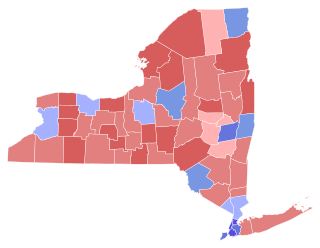
The 1932 New York state election was held on November 8, 1932, to elect the governor, the lieutenant governor, the state comptroller, the attorney general, the chief judge, a U.S. Senator and two U.S. Representatives-at-large, as well as all members of the New York State Assembly and the New York State Senate.

Susana Martinez is an American politician and attorney who served as the 31st governor of New Mexico from 2011 to 2019. A Republican, she served as chair of the Republican Governors Association (RGA) from 2015 to 2016. She was the first female Governor of New Mexico, and the first Hispanic female governor in the United States.
The 1932 Jalisco earthquakes began on June 3 at 10:36 UTC with a megathrust event that registered 8.1 on the moment magnitude scale. With a maximum perceived intensity of X (Extreme) on the Mercalli intensity scale, at least 400 deaths were caused in Mexico and neighboring Guatemala. It was the first of a series of seismic events that affected parts of western Mexico during the month of June 1932, all reaching magnitude 7 or greater.
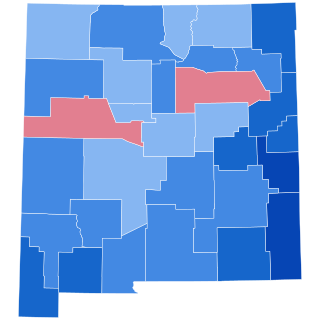
The 1932 United States presidential election in New Mexico took place on November 8, 1932. All contemporary forty-eight states were part of the 1932 United States presidential election. State voters chose three electors to represent them in the Electoral College, which voted for President and Vice President.

From January 1822 to July 1823, the five Central American nations of Costa Rica, El Salvador, Guatemala, Honduras, and Nicaragua were controlled by the First Mexican Empire, and briefly, the Supreme Executive Power. Collectively known as the Captaincy General of Guatemala, each nation was one of the five southernmost provinces of the Mexican Empire. This incorporation of Central America brought Mexico to the height of its territorial extent.